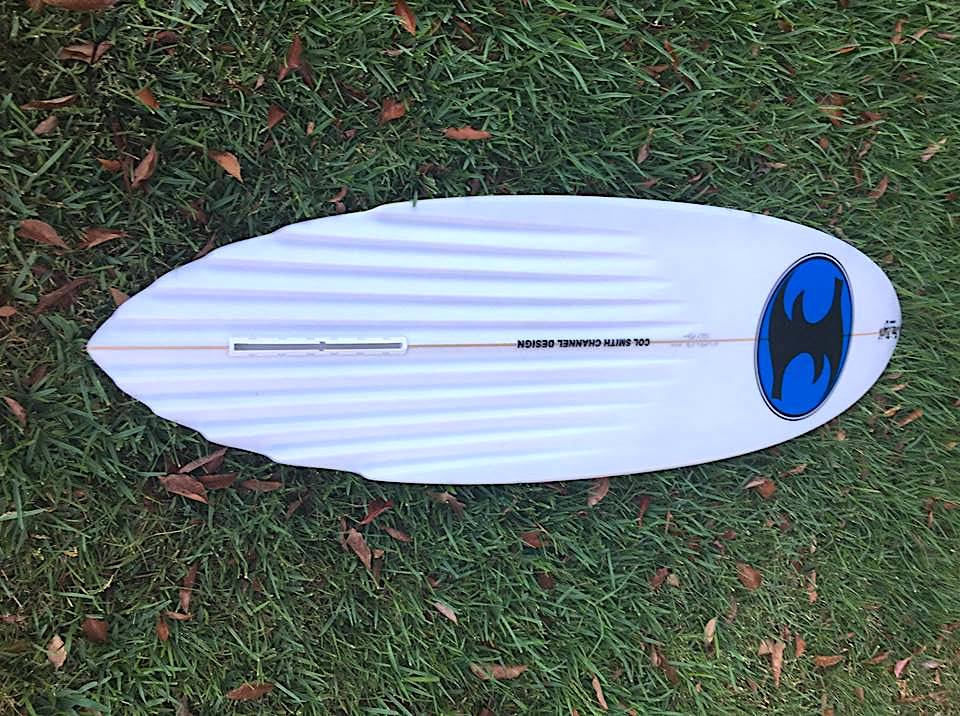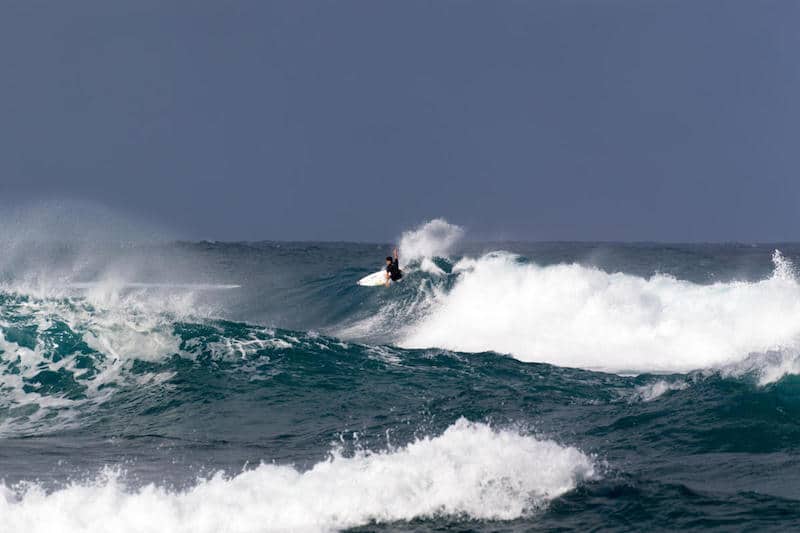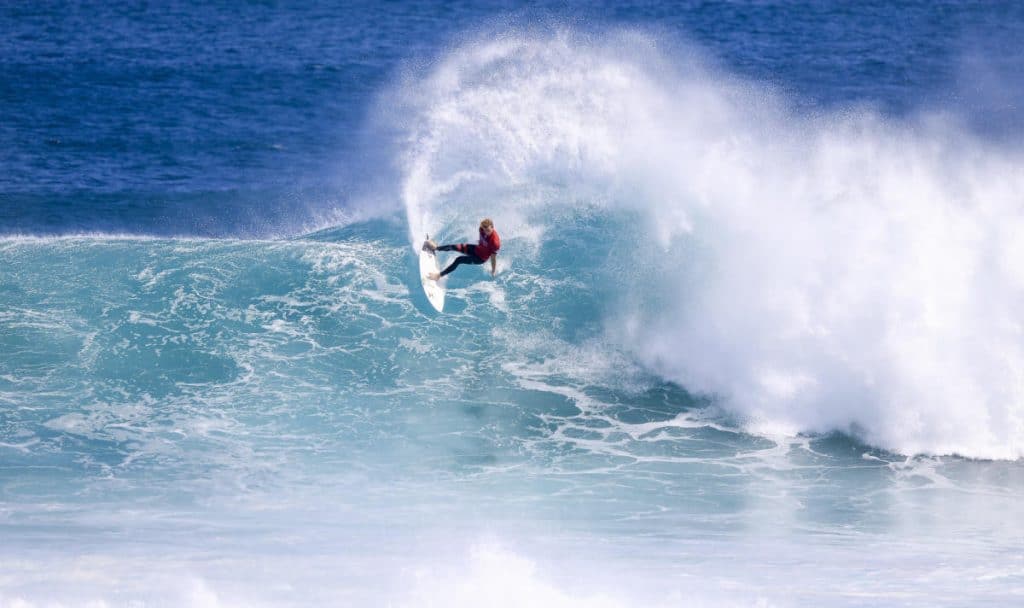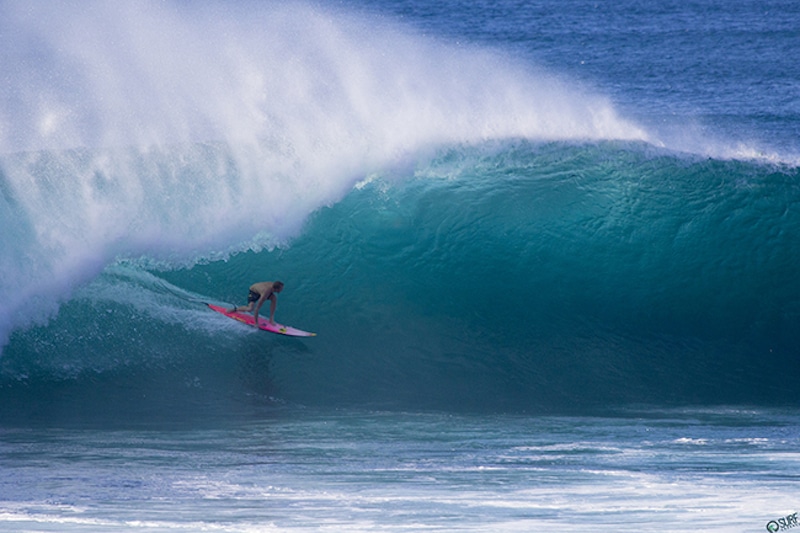No it’s not a fucken model name! It's a ten-channel single fin!
I have so many surfboards. I didn’t once. Nobody did when we were kids. I went to Margaret River for the Aussie Titles with a 6’0” and a 6’3”. Quiver!
I stayed in a shitty caravan in the Margarets camping ground with John and Rob Harris and Glen Winton. At the pre-contest meeting Tommy Peterson drank three bottles of Bundaberg rum. It rained a lot. It was 1978.
Col Smith won the contest. Colin Smith of Redhead, NSW. I could not believe there were two Col Smiths and they were both goofyfooters and could both surf so fucking briliiantly. Col Smith Narrabeen was all vertical power and arms and legs, and long blond hair and a mouth full of busted up teeth. Colin Smith Redhead had short dark hair, crinkly smiling eyes, perfect teeth, and one of the most fantastically graceful surfing styles I’ve ever witnessed.
Colin was extroverted and gleaming, yet never above himself.
Smithy rode “bee-tail” six-channel, single-fin boards made by Jim Pollard and then by Phil Fraser, and then eventually by Phil Myers of Lennox Head. He blew minds in Hawaii, won the Pro Class Trials at Sunset, surfed superbly at Pipe. The North Shore crew drooled over those boards.
He made friends with all of us kids, well, it felt like we were kids, even though Col was only a couple of years older than us. That was surfing at the time, when a small, poor NSW ex-mining town at the end of a potholed coast road could produce someone who was the surfing equivalent of a rock star.
Smithy rode “bee-tail” six-channel, single-fin boards made by Jim Pollard and then by Phil Fraser, and then eventually by Phil Myers of Lennox Head. He blew minds in Hawaii, won the Pro Class Trials at Sunset, surfed superbly at Pipe. The North Shore crew drooled over those boards.
Col and Allan Byrne were automatically mates. So many of the things they loved and respected in surfing were the same. They loved good hollow surf and they respected people who rode it well. They were schemers, but in a good way. Together they squared up Jim’s rounded-out channels and perfected the modern clinker-style design. Col told us about the ten-channels he was doing with Phil Myers. Trying to understand surfing, I sat at their feet and listened to their stories, usually under the influence of some sort of hashish.
Col died of cancer at the age of 31 in Margarets after going back there for the last 18 months of his life. He left us a son, Rique, who is a fantastic surfer in his own right. I dunno if AB ever quite got over it, or Phil.
Anyway, 20 years later I started hounded AB to make me an eight channel. I’d been riding the sixes for ages but I could remember Col saying to us, “Mate, the more channels, the better they go.” AB knew it, but he wouldn’t go there.
“Once you’ve got one, everyone’ll want one,” he said, “and then I’ll be fucked!”
Then AB died for chrissake.
A couple of years after that I saw Rique had got hold of one of Col’s old ten channels and was tearing the bag out of Jakes Point on it. I also saw it was a Free Flight — Phil Myers’s brand.
Cut to Phil making me a 6’5” x 183/4” x 23/4” ten-channel, single-fin pintail, as close as he could to the board Smithy had passed on to Rique.
I have a lot of boards but this is the only one that scares me. It has almost no rocker beyond a third back from the nose. There is also barely any outline curve thanks to the channel exit points and low width. There is no freebie pick-up speed from side fins. It is completely unforgiving of any error.
I took it to J-Bay and rode my best wave of the year, and did nothing on that wave other than four simple turns, base to lip to base to lip. That was it.
This was the arvo of the day Kelly busted his foot. I can’t remember why they pulled the contest so early that day. The wind swung a bit more southerly, sideshore on the Boneyard section, or maybe there was a pseudo-shark, I dunno.
I took the board and ran around the back side of Boneyard where the whole beach was closing out in pluming six foot-plus bombs, figuring to paddle out while they finished the last heat of the arvo.
The paddle-out was work, but not difficult work. It shook me up enough to put me into the right headspace for this incredible location, with which I was just coming to grips.
Maybe five people out up top, including Louie Egan and Tom Whitaker. Early finishes always lead to coach-froth; the coaches watch too many heats and go quietly mad. Louie and Tom got waves, and I back-paddled a bit higher into the Boneyard peak and a solid six foot wave appeared — long tapering wall, windblown in the lip, easy paddle-in.
The thing I’d found while surfing this board elsewhere, and the reason I am scared of it, is that under a certain wave-speed, it doesn’t work. The water won’t get through the channels. It has no feel. You have to stand back on the fin and swing it like a mattock. I had many memories of single fins, the way they tend to draw short in turns and are slow to gain speed off the mark, but low-speed clunkiness wasn’t one of those memories. Yet the few times I’d ridden it in surf capable of pushing it to speed, the thing would just lift off like some sort of aquatic Scramjet.
I had such high hopes of it here!
But what if it didn’t break through?
What if it just wobbled on those channels, underpaced and underpowered?
Pointless concern at Jeffreys Bay.
I took off at a slight angle and let the board run downhill at maybe 45 degrees to the wave line. The wave lurched and stood up, and just like that the board went into Scramjet mode. With no side-fins asking me to turn, it felt like I was riding on air, effortless, in a full flying glide. I compressed slightly into the wave base and tilted the board just a little bit on to its inside rail, not wanting to over-pressure it at full speed — single-fin adherents won’t tell you this, but singlies don’t typically feel the inside edge of a turn very well, you have to wait for the fin to anchor the turn before you push. In this case the ten channel went into the turn instantly and with no resistance whatsoever, so cleanly it felt like nothing was happening, but it was happening, because I could feel every molecule of water running down the edges of the channels — an incredible sense of connection with the wave.
By this time we were about to enter Supertubes and I could see the jetski guy driving on the shoulder trying to get my attention, so just rode the Scramjet out off the back and into clear water. Four turns, 150 metres.
The board leaped off the wave base and went up the face at fantastic speed. I kept the angle quite low and put my eyes on the next section, which already rose off the reef some way ahead. I felt absolutely no concern about the distance involved. The top turn was less sensitised than the bottom turn, thanks to the curve in the wave face. You’ll have had the feeling of pressure on that curve pushing you forward and down. All I had to do was shift a little weight back over the right heel, and the board and the wave did the rest. If anything, it came out of the top faster than it went in. I had to settle myself so as not to scream, or overpower the next turn, a long snowboardy base line chatter of a thing. I felt the board asking me to be patient in this turn: just stay low, it said, you can decompress and take the brakes off once we’re heading back up. I did as it requested and it sprang out of the turn again and straightened the line so we were flying along parallel to the lip.
By this time we were about to enter Supertubes and I could see the jetski guy driving on the shoulder trying to get my attention, so just rode the Scramjet out off the back and into clear water. Four turns, 150 metres.
No wonder Col used to ride ‘em.
Despite its restrictions this is a unique surfboard in my experience. I do have to discipline myself into riding it only when Scramjet Mode is available. To make sure I do this, I got Phil to make me a 6’1” version, a little wider with more outline curve and a little more vee — sort of a spine, though up from the fin, not behind it. This board is sweet and can be ridden happily in a three foot rip bowl.
I don’t get a feeling of Col from it, but then again I’m not a goofyfoot.







